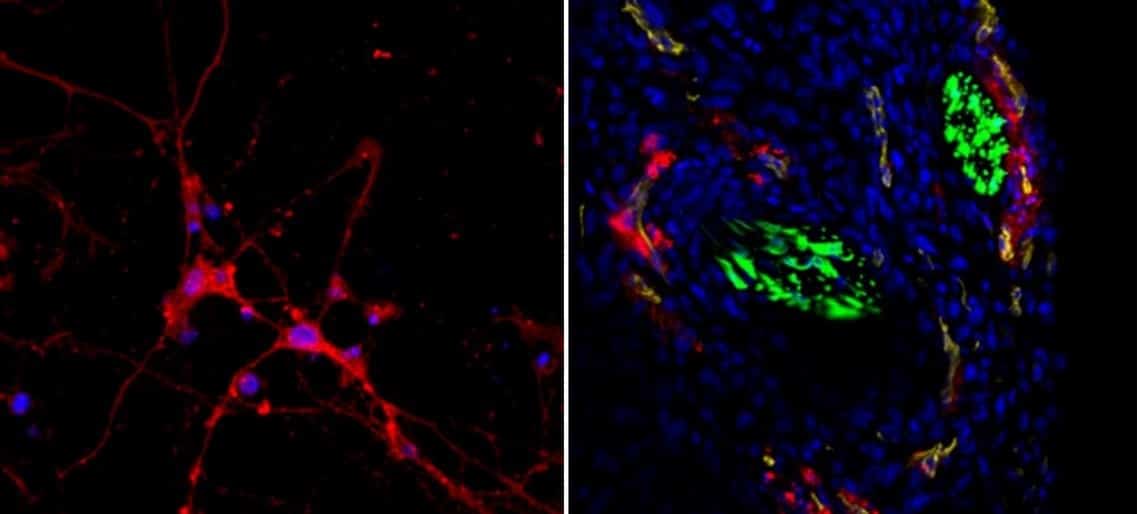An extensive group of researchers published in Science AdvancesFindings supporting the effectiveness of the technology they developed: breast cancer treatment using anesthesia of the nervous system around the tumor. The treatment stopped not only the spread of the tumor but also the formation of metastases to other organs

Researchers have developed an innovative treatment for breast cancer, based on the nervous system. the research that was published on the cover of the journal Science Advances It was led by Prof. Avi Schroeder and PhD student Maya Kadori from the Wolfson Faculty of Chemical Engineering. The research was conducted under the leadership of researchers from the Technion and the Hebrew University - Prof. Yossi Boganim from the Faculty of Medicine, and with researchers from the Institute of Pathology in Ichilov.
Breast cancer is very common among women, and despite breakthroughs in the diagnosis and treatment of the disease, about a thousand women in Israel still die from it every year, about 15% of them under the age of 50. Around the world, about 685,000 women die every year from this disease.
For many years, Prof. Avi Schroeder has been involved in the development of innovative treatments for cancer, including breast cancer and in particular "triple negative" cancer - an aggressive cancer characterized by a rapid rate of cell division with a higher risk of developing metastases. The technologies developed in Prof. Schroeder's laboratory include innovative methods for encapsulating drug molecules in nanometer particles that carry the drug to the cancerous tumor and release it inside it, without harming healthy tissues.
In the current study, the researchers discovered that cancer cells maintain mutual relationships with the nerve cells in their environment: the cancer cells encourage the penetration of the nerve cells into the cancerous tumor, and this penetration increases the division, growth and spread of the cancer cells. In other words, the cancer cells recruit the nerve cells to their advantage.
Based on these findings, the researchers developed a treatment that affects the cancer tumor through the nerve cells. This treatment is based on the injection of nanometer particles containing a numbing agent into the bloodstream. In the bloodstream, the particles move to the tumor, accumulate around the nerve cells in the cancer tissue and paralyze the local nerves and the communication of the nerve cells with the cancer cells. The result: a significant delay in the development of the tumor and the development of metastases to the lungs, brain and bone marrow.
The nanometer particles developed by the researchers simulate the cell membrane and are coated with special polymers that mask them from the immune system and allow them a long circulation time in the bloodstream. Each such particle, which has a diameter of about 100 nanometers, contains the said softening material. According to Maya Kadori from the Technion, "We know how to produce the particles of the desired size precisely, and this is critical because it is the key to penetration into the tumor. Cancerous tumors encourage the increased growth of blood vessels around them, and this is so that they can receive oxygen and nutrients, but these blood vessels are damaged in their structure and contain nanometer-sized holes that allow the penetration of nanoparticles, also the cancerous tissue is characterized by poor lymphatic drainage, which further increases the The accumulation of the particles in the tissue. Therefore, the whispering particles we developed move in the bloodstream without penetrating healthy tissues; Only when they reach the damaged blood vessels of the tumor do they leak out of them, accumulate around the nerve cells of the cancerous tissue and create a disconnection between them and the cancer cells. The fact that this is a very targeted and precise treatment allows us to introduce significant amounts of the numbing substance into the body because there is no fear that it will harm healthy and vital areas of the nervous system."
In experiments with cancer cell cultures and treatment of mice, the new technology inhibited not only tumor development but also the formation of cancer metastases. According to the researchers, these findings may be relevant to the treatment of breast cancer in humans.
